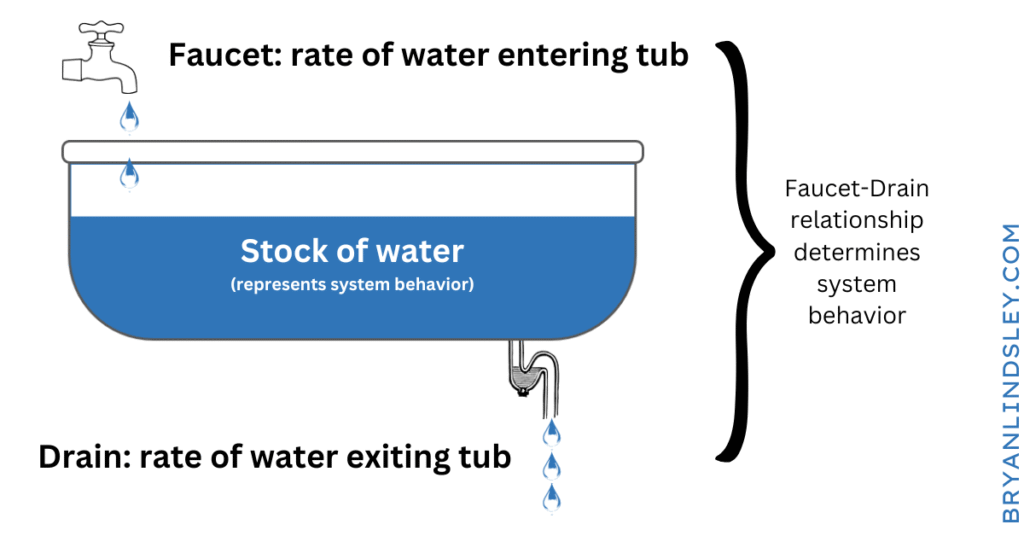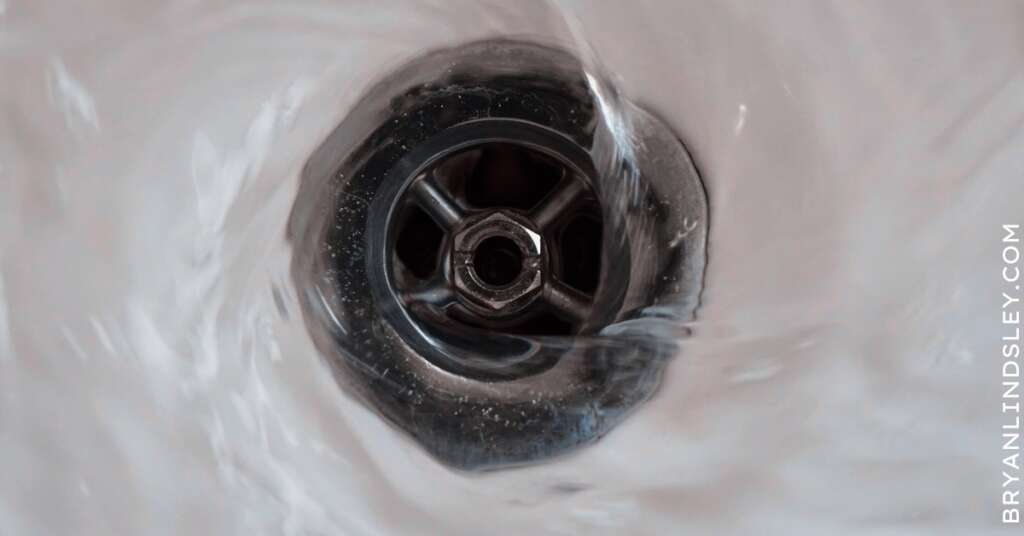This week’s tip: Discover the problem’s structure if you want to have lasting influence on its behavior
We often measure success by the number of people impacted, the amount of money invested, or the outputs produced.
But what if our focus on quantities blinds us to the true drivers of change?
What if the secret to creating lasting impact lies not in the numbers alone, but in the relationships?
This is where the one of the ultimate insights of systems thinking comes into play:
Structure determines behavior.
In today’s issue, I explore this transformative idea and its real-world implications for solving homelessness.
Beyond quantities
Changemakers across the globe, including me, have tried to get rigorous about making an impact with data analysis.
Oftentimes, we start quantifying everything.
The assumption is that by keeping track of the numbers, we can move each one in the direction we want.
For example the Census Bureau tracks the number of people living below the poverty line.
And housing advocates count the number of homeless individuals.
But, in both of these examples, people tend to focus on changing the number itself rather than the relationships (or structure) that drive the numbers.
Perhaps a simple analogy can help explain what I mean.
The bathtub analogy
To grasp the significance of system structure, the bathtub analogy serves as an enlightening metaphor.
It’s the world’s simplest system.
Imagine a bathtub with a faucet and a drain.
The water level represents the system’s behavior, while the faucet and drain symbolize the structural elements.
Traditionally, changemakers’ focus has been on the water level (or quantity of water in the tub) to address problems.
How high or low is the water?
Let’s get a ruler and measure it.
As the father of management, Peter Drucker, famously taught,
“What gets measured, gets managed.”
So, then we frantically focus on getting the water level to our desired level as fast as possible.
Grab a bucket and scoop out that water.
Cash payments to all the poor.
Free housing for all the homeless.
No more problem, right?
Surely the bathtub is empty.
But sadly, no.
Many Herculean efforts to change the water level temporarily change the amount of water – but they don’t change the problem’s structure.
The faucet is still on and it’s pouring in faster than the drain can empty out.
In other words, the structural flow dynamics – the faucet and drain – hold the key to lasting change, not the water level (or quantity of water) itself.
To be clear, I’m talking about how the relationship between faucet and drain – the rate of water entering the tub compared to the rate of water leaving the tub – effectively determines the water level.

Let’s see how this insight relates to one of today’s most pressing issues.
The structure of homelessness
According to a recent Wall Street Journal review, numbers of homeless individuals have increased significantly in 100 of 150 reported geographies (e.g. major cities and states where data is available).
People on all sides of the issue are focused on the numbers.
How can we get the water level down?
Some advocates want to move every homeless person into free permanent supportive housing.
But notice the twin effects of this policy.
First, for those struggling to avoid homelessness, there is now a perverse incentive to drop into homelessness as a way to qualify for free housing.
It wasn’t the policymakers’ intention, but based on interviews with people on the edge of experiencing homelessness, it’s a strong nudge of behavior.
Here’s the lament of someone struggling to pay rent on their crappy apartment:
“My case worker said I would only qualify for free housing if I lost my part-time job and my lease expired.”
They can get a lot of help, but only if they lose a little more.
Additional eligibility requirements for free housing, like having “multiple barriers”, such as experiencing homelessness and a drug addiction, also unintentionally disincentivize recovery.
The net result is an increase of the flow of people into homelessness.
The second effect – that people placed in free supportive housing haven’t actually “exited” homelessness yet – is only apparent much later.
But it’s important to note that providing a bed and ongoing free services doesn’t necessarily solve the homelessness problem.
As some research has indicated, free housing without preconditions can result in slower recovery and higher mortality than alternative options.
So free housing for the homeless is perhaps an improvement, but it depends on whether the end-result is better than alternative options.
In some sense with free housing, the water is still in the tub, and the exit (or drainage) rate is delayed and becomes more opaque.
For now, let’s put aside the debate about the effectiveness of Housing First solutions.
Instead, let’s think about how we could apply the Bathtub Analogy to homelessness directly.
Structure determines behavior
We need to focus on the structural flow dynamics of the problem.
Specifically, here is the trinity of what is most important:
1) The faucet, or rate of people entering homelessness;
2) The drain, or rate of people exiting homelessness;
3) The relationship between faucet and drain.
Here’s the cold hard truth:
Homelessness will persist or grow until the rate of people entering homelessness is lower than the rate of people exiting homelessness.
Let me close by giving three ideas that begin working toward solving this equation.
First, perhaps a third of our energy should go toward preventing homelessness before it occurs, and being sure not to offer any perverse incentives for becoming homeless.
Maybe this includes programs like emergency rental assistance.
Second, a third of our effort should go toward care – not necessarily housing itself, but services – of those currently experiencing homelessness.
For example, healthcare and mental health services, substance abuse treatment, job training and legal assistance.
The last third should go toward research examining which interventions have the most effectiveness in treating the causes of and symptoms of being homeless, and which investments lead to people leaving homelessness once and for all.
Whether you agree with these prescriptions or not, I hope this analogy gives you a new way to think about affecting lasting change.
See you again next week.
==
Whenever you’re ready, there are two ways I can help you:
→ I’m a strategic advisor for the toughest societal problems like poverty, crime and homelessness. People come to me when they want to stop spinning their wheels and get transformative, systems-level change.
→ I’m a coach for emerging and executive leaders in the social and public sectors who want to make progress on their biggest goals and challenges.
Let’s find out how I can help you become transformational.



